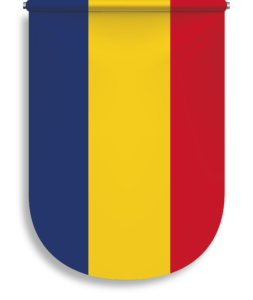Interactive Activities
Play and test your knowledge about the culture of Romania, Latvia, Turkey and Spain!

360º Videos
Enjoy restART for ART’s 360º Videos, and explore different European cultural manifestations, being able to experience what is around.
Spain
Galicia has a long tradition of sculptors, with some outstanding artists in the last century. In this case you can admire “El Nadador”, an important piece located on the edge of the Vigo estuary, and which forms a striking recognition of the sculptor Francisco Leiro to the effort of swimmers. It is a piece that forms part of a bronze sculptural ensemble made up of several pieces that appear to be partially submerged in the pavement of Vigo’s port area. In this case, it is an abstract piece made in bronze around a swimmer diving into the concrete.
Turkey
See some of the most representative sites of Hatay, one of the most important ancient settlements in Turkey, a very special place between the Mediterranean Sea and the Middle East. Discover some of its natural riches, historical constructions, material heritage, and some of its most emblematic places over the years. The beauty of the meeting of cultures mixed with the cultural heritage of a part of the world that treasures a deep and rich history at all levels.
Romania
The technique of making traditional carpets/under the name “bark”, was included in the UNESCO heritage even on the National Day of Romania, on December 1, 2016, in order to preserve the traditional techniques of making that started to disappear with globalization. The experts considered that the “bark” weaving technique at war, transmitted from generation to generation, is an expression of “creativity, identity and social cohesion”.
In the past, the “bark” was used especially for wall decoration or was part of the bride’s dowry. The women of the village started weaving them for war and replaced the beams lined with tree bark from the wall. That’s where their name comes from. Brides used to be proud to take them out of the dowry box and decorate their new home with them.
The originality, unity and artistic value of Romanian barks is due to the skill and ingenuity of the generations of women who worked on them, integrating motifs and symbols of wide European and extra-European circulation into the decorative compositions: geometric (the oldest), vegetal, zoomorphic or anthropomorphic, signifying water, the sky, the earth, the sun, the tree of life, etc., the stylization and abstraction reaching a high degree of sophistication.
The Olten carpet is considered the most valuable type of Romanian bark. It is characterized by the predominance of floral, zoomorphic and anthropomorphic decorative elements. As for the decorative composition, the border bordering the central field is specific, often meeting even two or three borders.
Although the weaving of barks was a household craft passed on in the family environment, with the development of the educational system, learning the techniques was also done through school and vocational education.
Latvia
In the video you can see one of the “restART for ART” project’s local stakeholders in Latvia, folklore group “Brička” (NGO “Ķekavas muzikanti”) performing one of their favourite folksongs. This group is well known in Latvia and plays in a lot of events, starting from their own family and friend gatherings, concerts, dance evenings as well as National Song and Dance festival usually, where one has to withstand a big competition to be able to participate.
Traditional music in Latvia has a deep-rooted cultural heritage. It is an integral part of the country’s culture and identity, and it has been passed down from generation to generation. Traditional musical instruments such as the violin, drum, and accordion are still widely used in Latvia today. Folklore groups regularly perform traditional songs at concerts and festivals throughout the country. Moreover, Latvia’s National Song and Dance Festival is one of the largest celebrations of traditional music in Europe. .Latvian folk music began to be collected in the 19th century. Many scholars have studied Latvian traditional music, and a number of ethnic museums now preserve musical instruments and other artifacts from Latvia’s past. The music of Latvia has longstanding traditions that go back thousands of years. From the 14th century through to the present day, it has been heavily influenced by its neighbors for hundreds of years. Folk songs are usually sung in Latvian language.
Local videos
Here you have available different videos where you can get to know interesting examples of intangible artistic heritage in Romania, Turkey, Latvia and Spain. With each one you can read an explanatory description that will help you to better understand and appreciate their culture.
restART Wiki
The restART for ART Wiki is the place where you can show and comment on new examples of the culture of the participating countries, or from other countries, and find commonalities, echoes and resonances between cultures not so different despite being far away, and at the same time with other points of view and other traditions that will enrich your cultural baggage.
restART Forum
Welcome to the restART for ART Forum. Here you can tell us about your experience on this platform, in the use of the products and guide created, or in the trainings carried out in Romania, Latvia, Turkey and Spain. In addition, you will be able to share your work, offer your collaboration, or communicate with other participants.




